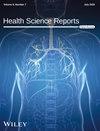Understanding the Intersection Between Hormonal Dynamics and Brain Plasticity in Alzheimer's Disease: A Narrative Review for Implementing New Therapeutic Strategies
Abstract
Background and Aims
Alzheimer's disease (AD), a chronic neurodegenerative disorder, is portrayed by neurocognitive decline in the structure and function of the human brain. Various factors are implicated in the pathogenesis to neuroplasticity alteration in the brain of an individual afflicted with AD. The subset of these elements known as “hormonal dynamics” is paramount in the pathophysiology of AD. This review dives into the complex relationship between hormonal dynamics and brain neuroplasticity with special handling of AD considering the impediments and opportunities for the implementation of therapeutic strategies.
Methods
A comprehensive review was conducted using online search databases PubMed/Medline and ScienceDirect, identifying—with a thematic approach—articles handling the interaction between the hormonal fluctuation and neuroplasticity in AD with special consideration sought from the emerging therapeutic strategies.
Results
This review reveals the influence of various hormonal fluctuations, including estrogens and androgens, on neuroplasticity alteration in the structure and function of the brain in AD. Furthermore, the forms of neuroplasticity and synaptic plasticity processes are significantly altered with underlying neuronal loss and cognitive impairment in AD. Therefore, pharmacological and nonpharmacological therapy approaches as virtual reality and repetitive transcranial magnetic stimulation (rTMS), that promote synaptic plasticity advancements, play a key role in decreasing the rate of deterioration and progression in AD.
Conclusion
Apprehending the intricate interactions between hormonal dynamics and neuroplasticity of the brain is necessary for advancing targeted therapeutics for AD. Upcoming studies should be directed toward the pathophysiological mechanism of hormonal neuroprotection and regeneration with the long-term effects of hormonal replacement therapies, advocating personalized management plans. It should also work on identifying specific imaging and biological markers for the monitoring of HRT. Furthermore, other influences such as environmental, epigenetic, physical, and psychological illness should be tackled.


 求助内容:
求助内容: 应助结果提醒方式:
应助结果提醒方式:


